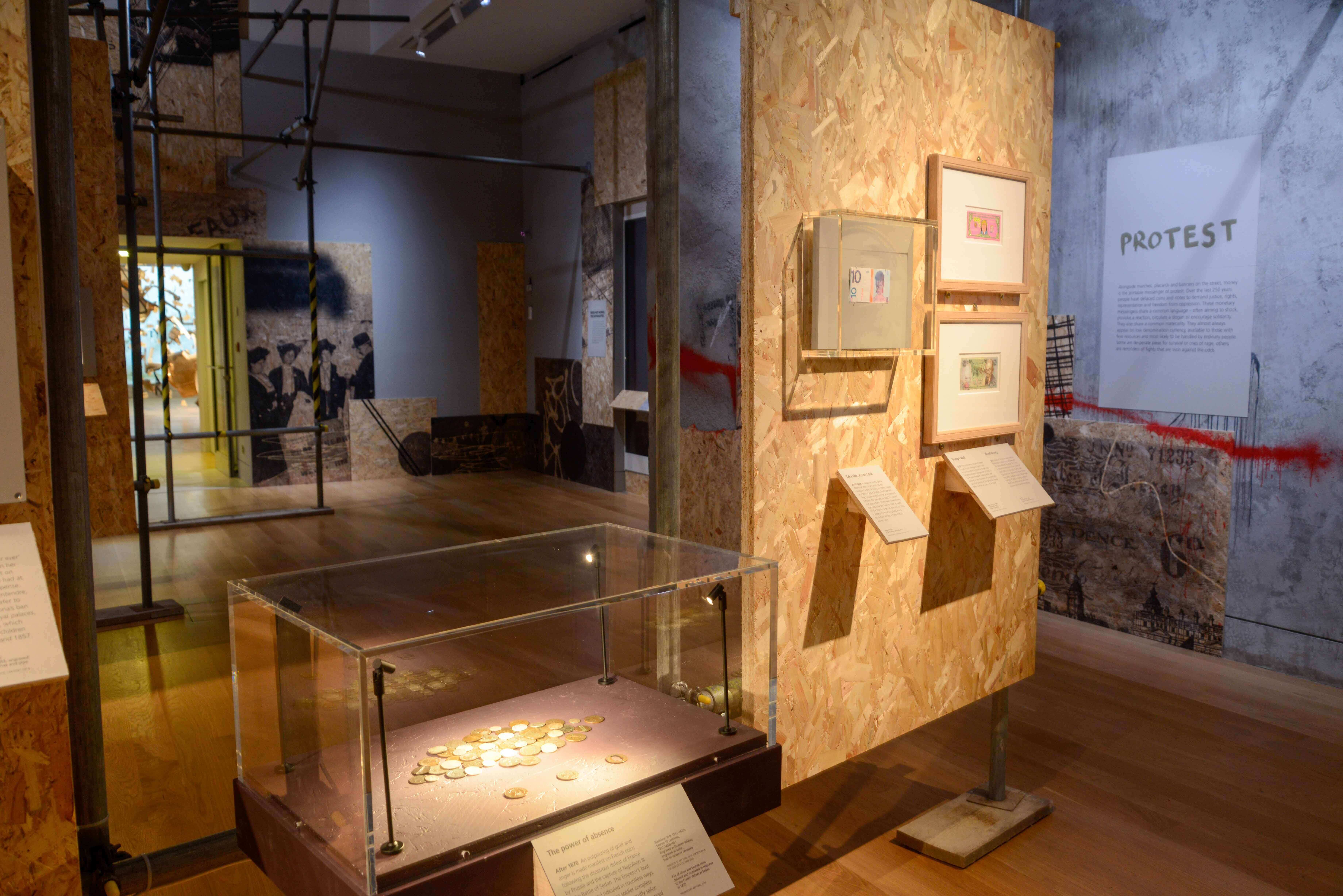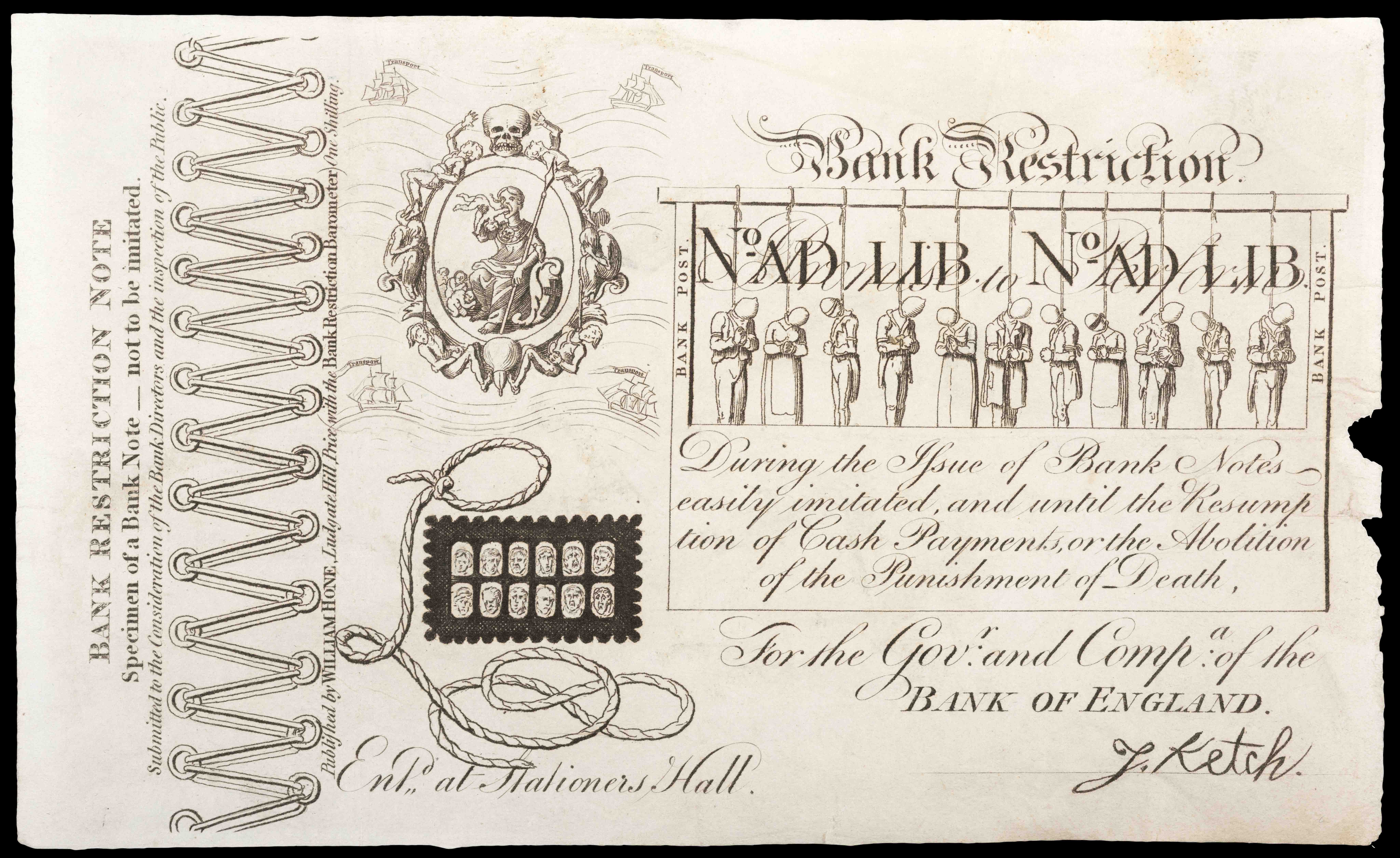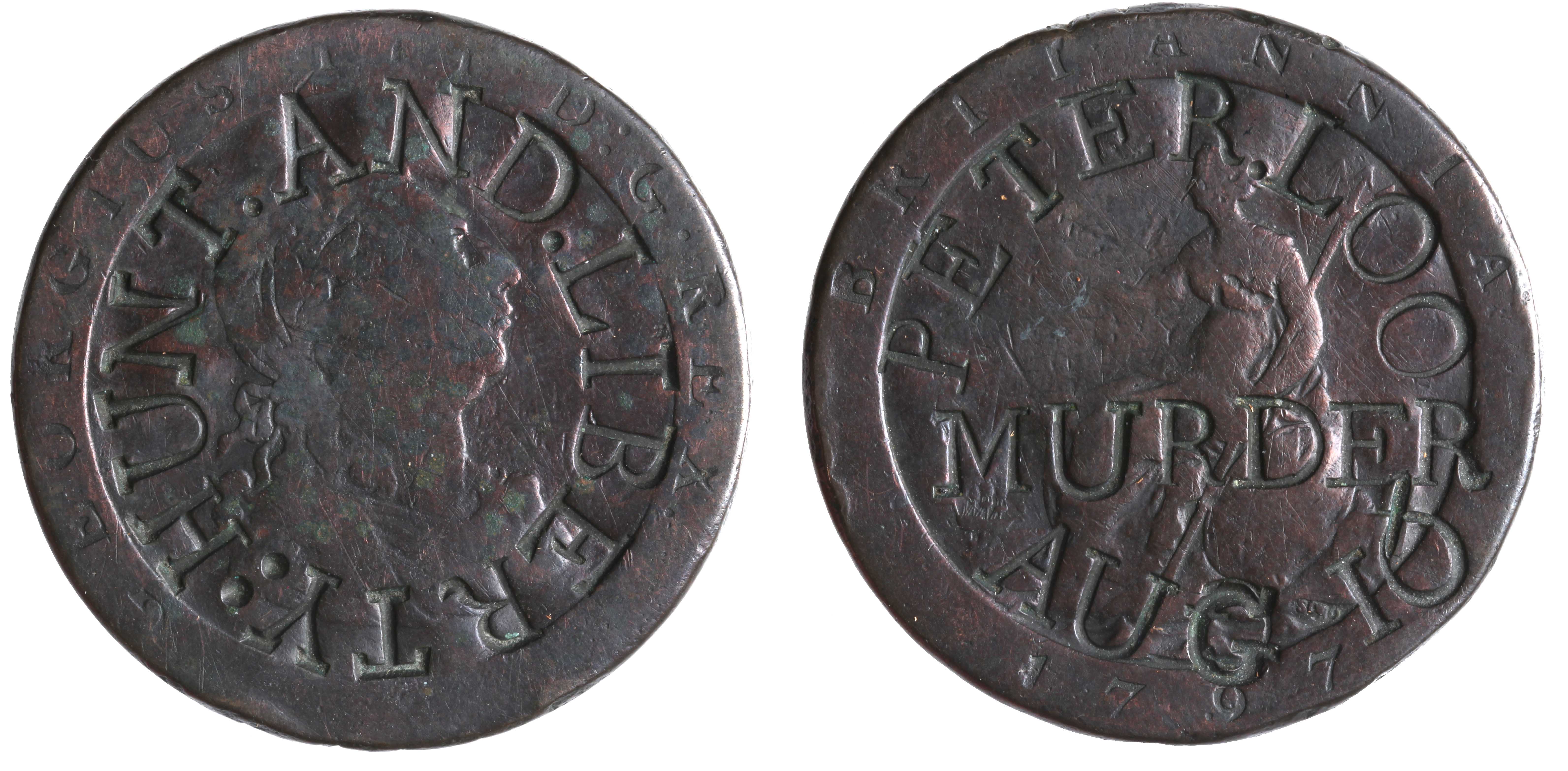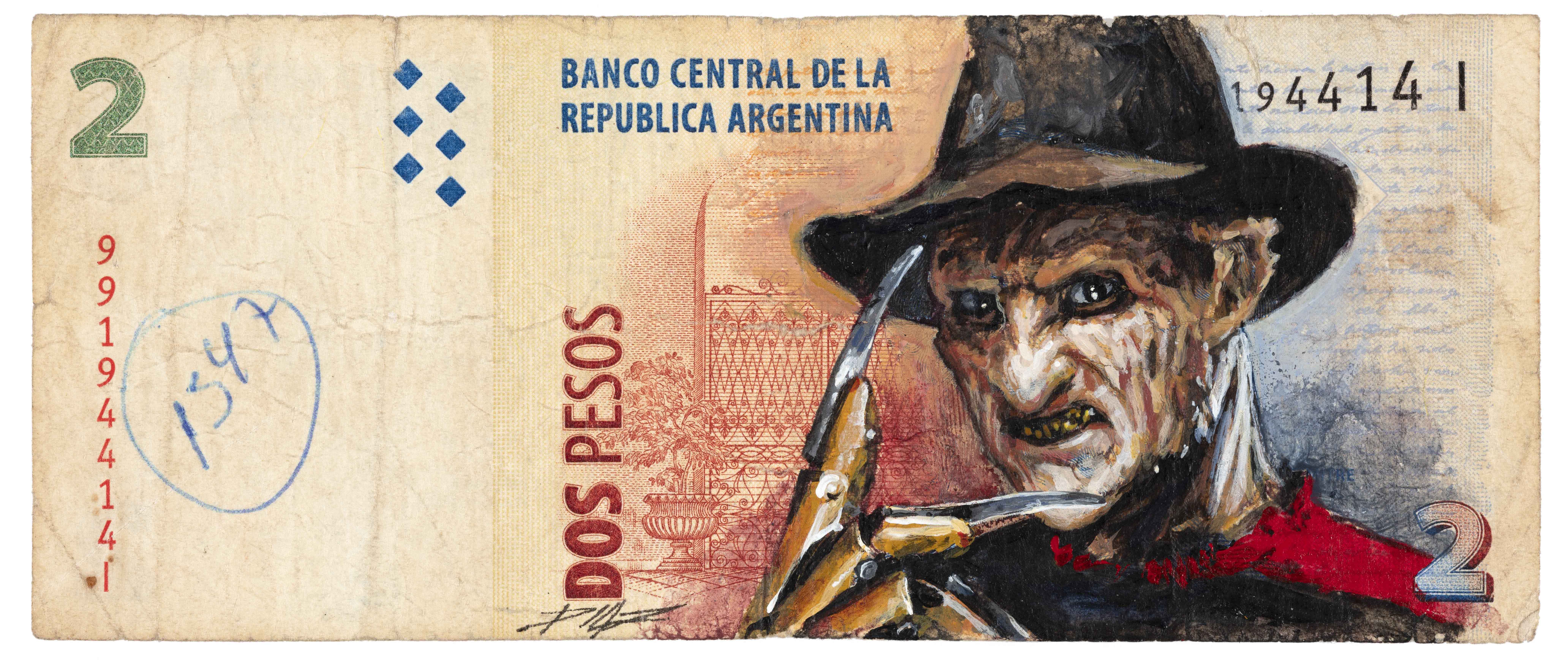Defaced!
By Richard Kelleher, Senior Curator of Medieval and Modern Money at the Fitzwilliam Museum
Defaced! Money, Conflict, Protest, showing at the Fitzwilliam Museum in Cambridge until 8 January 2023, is the first major exhibition to present a history of protest through money from the last 250 years. At its core is a new collection of currencies that have been mutilated as cries of anger, injustice, mockery or despair, many of which were acquired thanks to an Art Fund New Collecting Award received in 2018.
From the biting humour of a rare intact sheet of Banksy’s ‘Di-Faced Tenners’ to a unique coin commemorating the Peterloo Massacre of 1819 – the acts of defacement on show reveal the hidden struggles behind some of the major events of the past 250 years, as diverse as the French and American Revolutions, the suffragette movement, the Siege of Mafeking, the Spanish Civil War, the Nazi concentration camp system and occupation, the deadly sectarian Troubles in Northern Ireland, and the Black Lives Matter protests. Money is both a medium and a metaphor and its physical representations – coins and banknotes – contain layers of meaning that activists and artists have manipulated, challenged, dismantled and subverted for more than 200 years.

The first money-art crossovers appeared in Britain in the late eighteenth and early nineteenth centuries. Unlike many modern artists, their makers were careful to avoid charges of counterfeiting or defacing legal tender and so created imitative forms of paper money that would not be mistaken for the real thing. One such piece was George Cruikshank’s 1819 Bank Restriction Note, a masterful deconstruction and remaking of the banknote as a powerful political statement. Cruikshank was moved to devise this when he saw the grim scene of two women hanged near the Old Bailey in London. Their crime was ‘uttering’ (passing) forged £1 notes.

George Cruikshank (1792-1878), The Bank Restriction Note – A Satirical Note, 1819. Fitzwilliam Museum, Presented by Art Fund.
A major enquiry running through the exhibition is how coins and banknotes have been used to support campaigns against unequal state power structures. A highlight of the collection is a unique penny stamped to commemorate the Peterloo Massacre. In August of 1819 a crowd of 60,000-80,000 people gathered at St Peter’s Field, Manchester to demand the reform of parliamentary representation. The grim events of that day are commemorated on a uniquely stamped George III cartwheel penny from the Fitzwilliam collection.

George III (1760-1820), copper penny, 1797. Stamped ‘HUNT.AND.LIBERTY’ and ‘PETERLOO MURDER AUG 16’. Fitzwilliam Museum, Presented by Art Fund.
The exhibition considers the role of money as a raw material, a canvas and an inspiration for artistic and political interventions. The illustrator Sergio Guillermo Diaz uses Argentinian banknotes as a canvas for his accomplished sci-fi, fantasy and horror portraits. On this example Freddy Kreuger replace the image of Lieutenant General Bartolomé Mitre. This two pesos note was demonetised in June 2018 after periods of inflation and replaced by a coin.

Sergio Guillermo Diaz, ‘Freddy Krueger’, acrylic paint on Argentinian 2 pesos note. Fitzwilliam Museum, Presented by Art Fund. © Sergio Guillermo Diaz
The exhibition concludes by questioning the future of money defacement in an increasingly digital monetary environment. These three objects are just a sample of more than 180 coins, banknotes, banners, artworks and other objects that feature in the exhibition. The exhibition is accompanied by a fully illustrated catalogue edited by Richard Kelleher and published by Paul Holberton Publishing.
